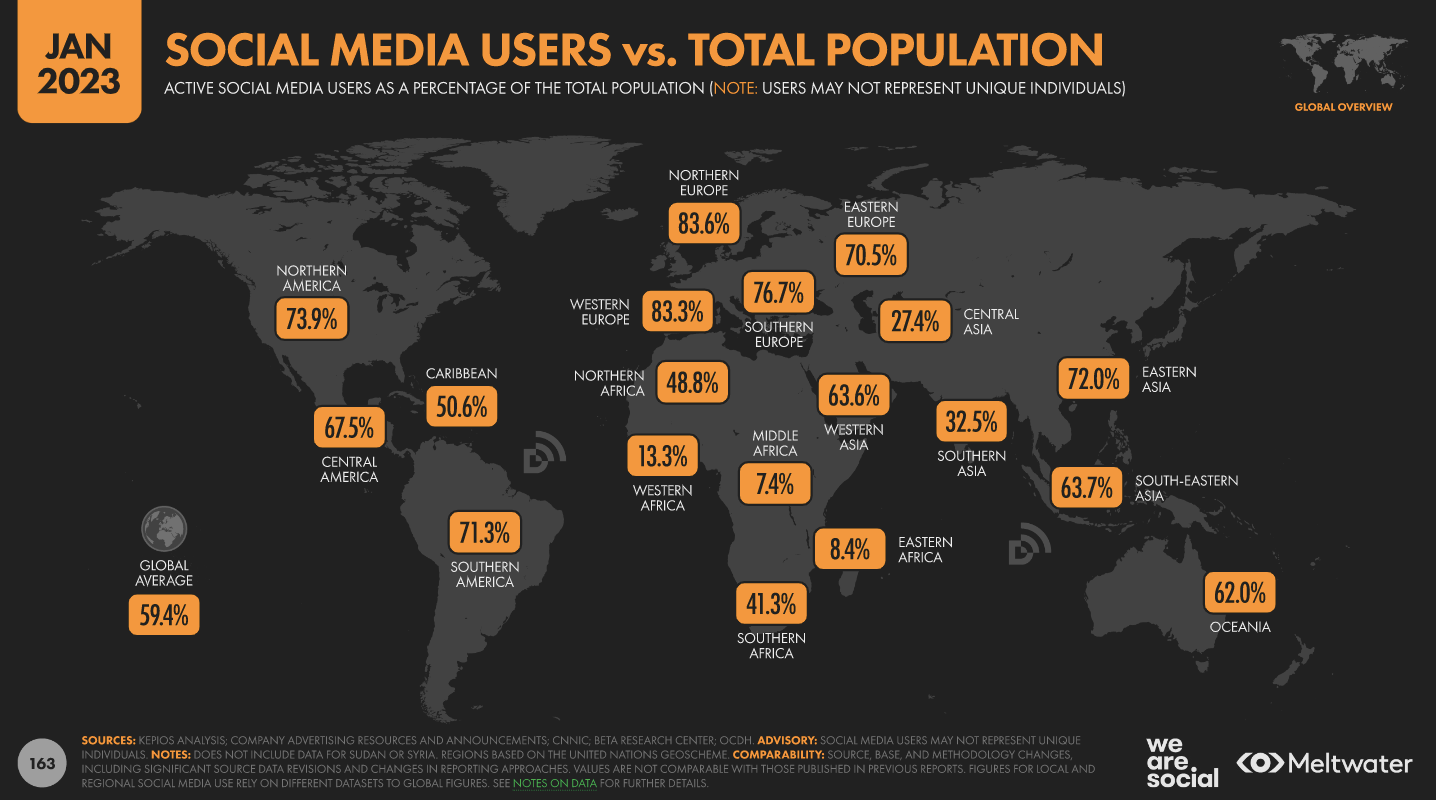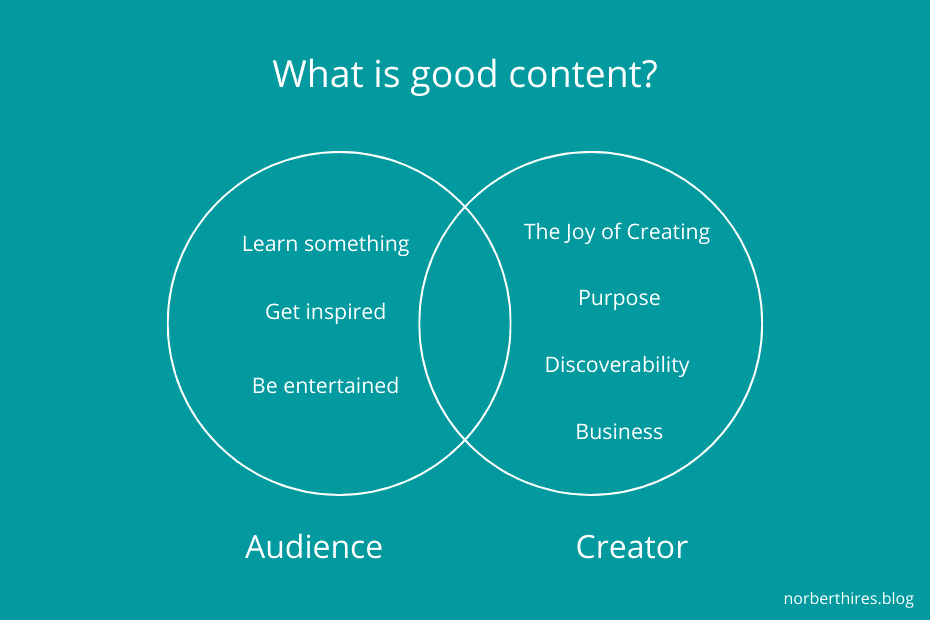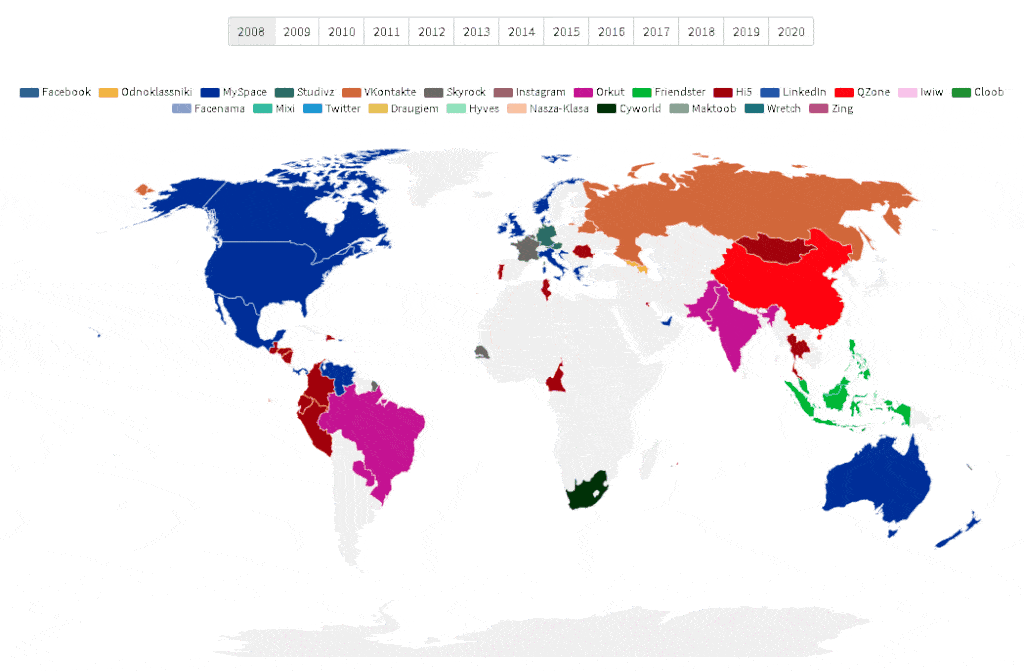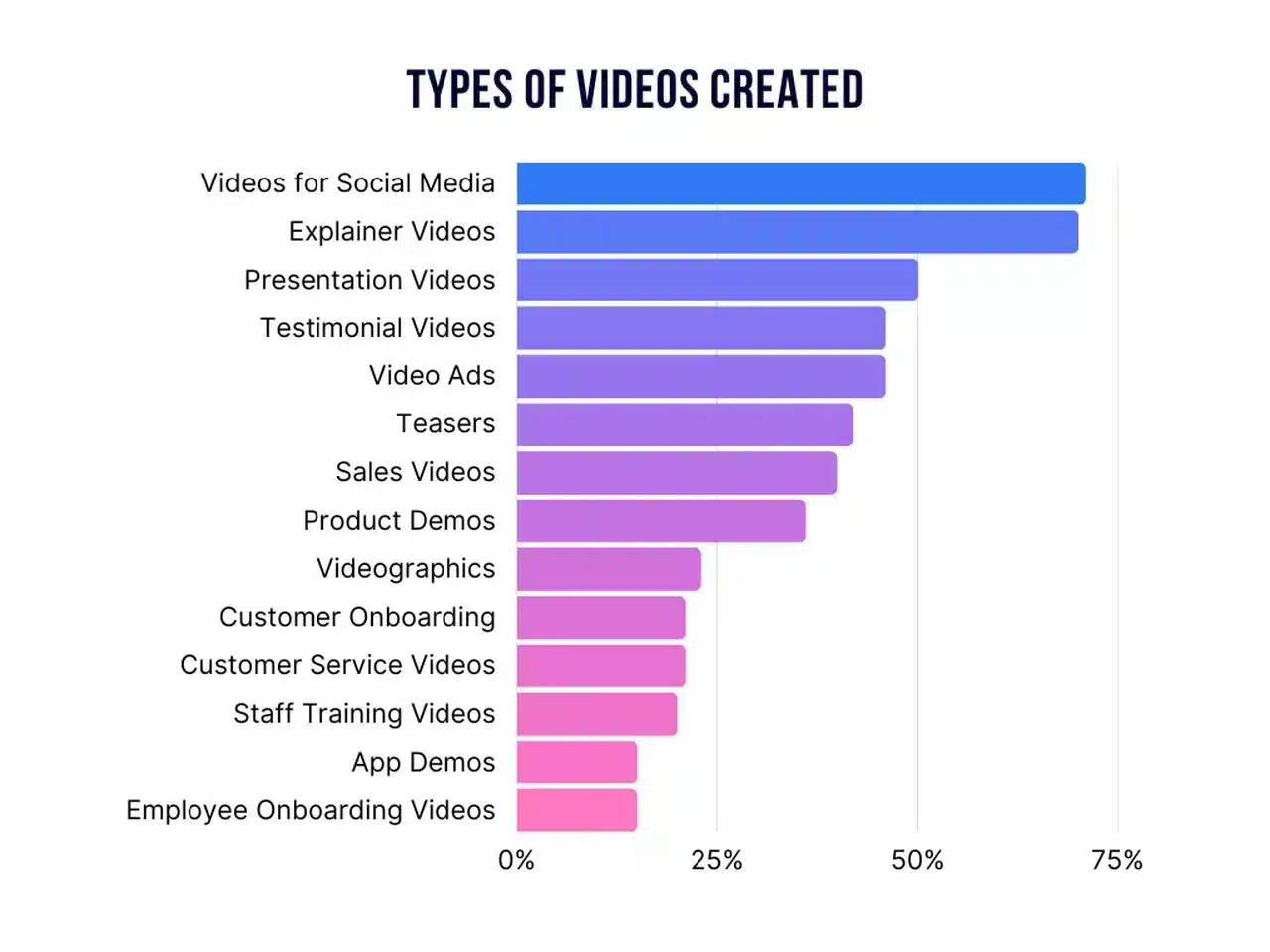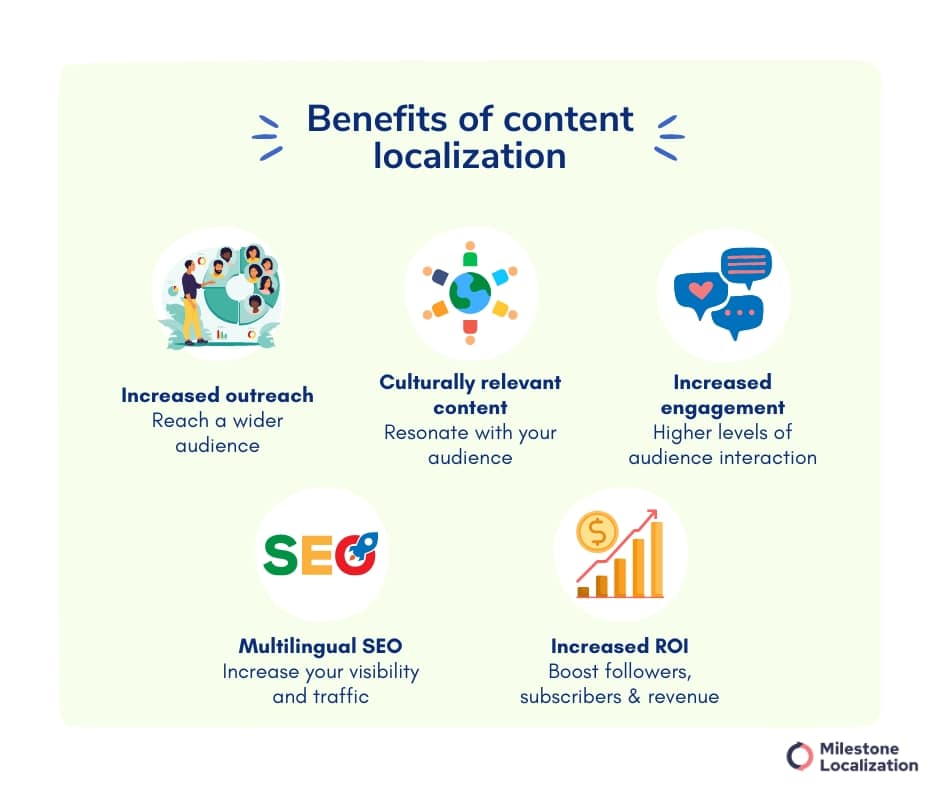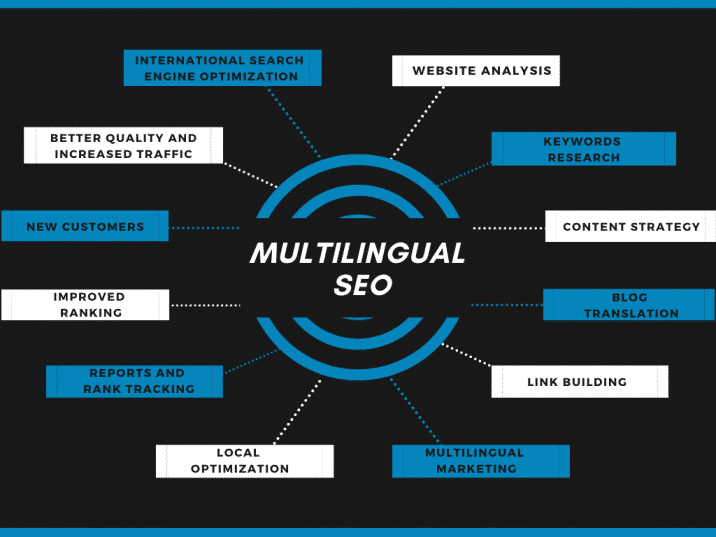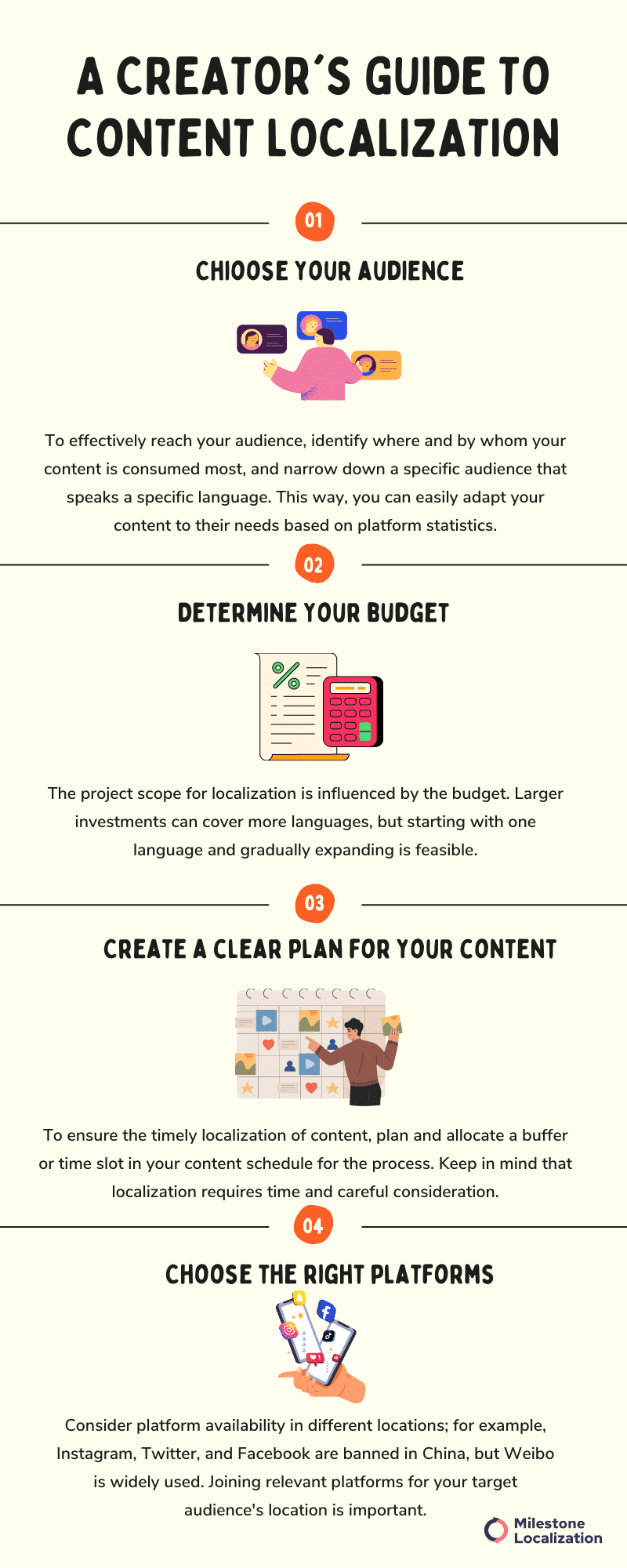With over 3 billion social media users, your content, if only available in one language, is likely to reach only a fraction of this number.
However, how could you create content that is accessible to such a wide, multilingual audience?
The answer is content localization.
Content localization is the process of adapting your content and its message to the cultural and linguistic backgrounds of your target audiences.
Besides translation, content localization provides a thorough adjustment of visual and audio elements as well as other details, such as measurement units, data formats, fonts, colour schemes, currencies, etc.
Content localization will take you a step further by providing you with the opportunity to create content beyond the one-size-fits-all approach. Through content localization, you can narrow your scope and reach new international audiences on social media.
If you think content localization can benefit media creators, keep reading!
In the following blog, we offer you a content localization guide that will help you understand the basics and get you started on your content localization journey!
Get Your Content Localized by Professionals
Milestone helps you seamlessly translate content & localize your website, products, and services for more reach, better conversions, and greater sales.
Importance Of Content Localization
Content that resonates with a wider, international audience is hard to produce.
Making your audience laugh, listen carefully, connect emotionally with your message, etc. is closely connected to common cultural beliefs, norms, and values.
Without content localization, you will never be able to provide your international audience with relevant content.
What’s more, creating and uploading content that does not resonate with your followers’ culture is unlikely to leave any impression on them. As you can imagine, they’ll see your post and quickly forget it.
Since it is completely meaningless to them. Your messages and experiences are rather unfamiliar to them, especially if they are in a language they can barely speak.
Content localization can help you transform your initial messages and content so that they are communicated to new audiences.
Content localization might require some significant adjustments, or sometimes a few changes are just enough.
Nevertheless, through content localization, you can ensure that your content is meaningful and memorable to all your international followers and subscribers.
Samuel Park, the founder of TechMaestro.co says:
Offering multilingual content helped me break language barriers and explore new markets. This decision led to increased engagement rates and a more global user base, boosting my brand’s growth.
Also read: 11 Elements To Consider For A Successful Localization Strategy
Localizing content for different digital platforms and audiences
On social media, there are different types of digital content you can post:
- Captions or text posts
- Blogs and articles
- Guides and electronic books (eBooks)
- Images, such as memes, photos, infographics, etc.
- Videos, such as video stories, live videos, Q&As, etc.
- Contests
- Newsletters, etc.
Your success on social media depends to a great extent on the content you post. This means that you must produce high-performing, effective content. This, however, can be quite challenging.
Thus, one needs to be strategic.
Content localization takes into consideration two main factors: platforms and audiences.
Indeed, most content creators rely on various types of content across different platforms to reach as many users as possible.
Content localization takes quite a different approach in this regard.
It takes into account the popularity and availability of each social media platform. For example, if your target audience is in China, you are unlikely to reach it via platforms, such as Twitter, YouTube, and Facebook since these channels are restricted in the country.
Opting for other platforms like WeChat, Weibo, and Douyin is a much better strategy.
Also read: Top 10 Tips For Social Media Localization
As for users, content localization follows the principle that no one is going to engage with content that they find irrelevant.
So the content you create is localized or adapted to the needs of your target audience.
No one is going to engage with something irrelevant to them. Do your research on the local target audience before you create any content for them.
Also read: How to Localize Your App and Reach New Users
Small details, such as the sequence of the images you post, can matter much more than you think. This is specifically true for regions in which people write and read right-to-left.
Content localization considers all aspects that could potentially contribute to a more engaging and resonating message.
Also read: Best Practices For Building A Multilingual Website
The dominance of video content and the importance of subtitling
Video content is taking over the digital world, with platforms, such as TikTok, Instagram, and YouTube being the leaders in this trend.
According to a report on content marketing, 78% of content marketers reported that their organizations plan to invest or continue investing in video in 2023.
Even platforms like Instagram, which started as static image-oriented social media channels, are now moving on to videos as their main type of content.
- Video content is an umbrella term that covers a variety of video types, such as:
- Tutorials
- Interviews
- Video advertisements
- Vlogs
- Live streams
- Product reviews and demos
- Webinars
- Event recaps and multimedia presentation videos
- Testimonials
- Product presentations, etc.
Regarding videos, content localization can help you make your videos accessible to a wider, multilingual audience without reshooting them.
How?
Subtitles are the most cost- and time-effective tool that content localization can offer. Subtitles in numerous languages and varieties can be created for each video, making your content easily accessible to international users.
Charles John, the founder of Airflow Academy says:
As video producers, we have seen an increase in both reach and views due to our use of localization. By making our content available in various languages, we have reached an audience that may not have come across it otherwise. It has helped us reach out to people of all linguistic backgrounds and cultivate a dedicated fan base in each.
Also read: Why Video Translation Is Worth It?
Connect With Your Audiences In Their Native Languages
Milestone helps you seamlessly translate content & localize your website, products, and services for more reach, better conversions, and greater sales.
Get in touch with us for a special discount.
Benefits of content localization
Content localization can bring you several benefits. Here are some of the greatest ones:
Increased outreach
Content localization can help you cross language barriers and address a much wider audience than before, regardless of their location or time zone.
This, in turn, can help you go viral and become an international star!
Content localization is, indeed, the best tool for you to spread your content and message all around the world.
Culturally relevant content
Providing more accessible, culturally adjusted content will undoubtedly make users resonate with your content much more.
Content localization is all about culture and local customs. Thus, your content will be quickly transformed into its most accessible version.
Also read: Business in Japan: Cultural Differences You Need To Know
Multilingual SEO
Content localization deals with one very important aspect – SEO.
Content localization will help you increase your visibility, and as a result, your content will appear among the top results.
David Krauter, Head Of SEO at Websites That Sell says:
Multilingual content helps your brand to reach search engines in multiple countries. It leads to an increase in your brand’s visibility. More and more audiences belonging to different languages can see your content. So, a broader range of audience can view your website. Your website starts getting higher traffic. The more data traffic it gets, the faster your website’s SEO rankings increase. It will expand brand engagement and conversation rates. Your brand will get more and more customers.
Increased interactivity
Content in the native language of your audience tends to trigger higher levels of interaction among the viewers. Thus, by simply providing subtitles or voice-overs in multiple languages, you can encourage your audience to be more responsive.
Indeed, your audience will be more likely to like, comment on, or share your content.
Increased ROI
People always prefer their native language, especially when it comes to social media. Thus, when people realize you provide your content in their mother tongue, they are more likely to follow you and even recommend you to their friends.
What’s more, content localization deals with other aspects, such as SEO localization. Your YouTube videos, for example, will be optimized for multilingual searches, and thus, users will be more likely to find your channel when browsing for content.
Both aspects can be greatly beneficial in terms of increasing your follower and subscriber bases. This, in turn, will bring you more interactions and possibly even more sponsors.
Sascha, a Lifecycle Marketing Consultant and blogger at Back2MarketingSchool, says:
I’m originally from Germany and therefore publish in two languages – German and English. I find it very useful because certain keywords/articles get early results due to less competition in German which boosts my overall page. It also takes me about 30% of additional work to create the German translation – I create the content in English first – which also gets me about 30% extra of revenue.
Content localization challenges and how to overcome them
English is losing its influence in the online world. Currently, native English speakers account for 5.4% of Internet users, while English makes up 25.3% of all the content online.
To reach the rest of the users online with your content, you need to be strategic when it comes to localization. Keeping in mind some of the most common challenges will give you the advantage you need to stay ahead of your competitors.
Choosing your audience
Before diving into localization, you need to think about your target audience.
You cannot reach every single user on the internet. Hence, you have to consider where and by whom your content is most frequently consumed.
Most platforms offer in-depth statistics on these matters, so you could simply have a look at those.
The most important thing is that you narrow down a specific audience who speaks a specific language. In this way, you can easily translate and adapt your content to their needs.
Determining a budget
Another important aspect of localization is the scope of your project. It is usually determined by your budget.
The bigger the investment, the more languages it could potentially cover.
Of course, starting with just one new language is also fine. You can slowly build up from there.
Creating a clear plan for your content
If you want to stay on top of your game, you have to take into consideration the fact that to localize your content, you need time.
Thus, having a clear schedule for your content will help you upload it on time without any delays.
This means that when you devise your content plan, you need to leave a buffer or a time slot in which the localization process will take place.
Choose the right platforms
What many often overlook is that different platforms are used in different locations.
For instance, in China, Instagram, Twitter, and Facebook are banned. If your target audience is situated in China, however, you could join platforms, such as Weibo, which over 30% of the Chinese population uses.
Also read: Doing Business In China: Cultural Differences You Need To Know
Additionally, it is extremely important to work with a professional translation and localization agency to ensure the quality of your translated content. These companies have extensive experience in localizing various types of content and can guide you in the right way according to your requirements.
Also read: Must Know Things About Korean Business Etiquette & Culture
MrBeast and how he used localization to boost his global reach
MrBeast, the highest-paid YouTuber, is probably the best-known example of how localization can help you take over the internet.
Who is MrBeast?
MrBeast has gained popularity through a mix of pranks, huge giveaways, and outrageous stunts. His videos are intended for younger audiences.
In 2021, he’s reported to have earned $54 million. What’s more, he has over 25 billion views.
Some of his most popular videos include being buried for 50 hours or challenging 456 contestants to take part in a real-life Squid Game and offering them the chance to win $456, 000 after they complete a series of games, similar to the ones from the South Korean series.
His approach to localization
MrBeast’s approach to localization is very simple: subtitles and dubbing.
All his videos are available in 12 languages: English, Spanish, Arabic, Chinese, Korean, Hindi, German, Portuguese, French, Russian, Turkish, and Japanese.
What’s more, he has separate channels for some languages, such as Russian, Spanish, French, and Portuguese.
To provide voice-overs for all his videos, he has hired native speakers. Aspects, such as lip synchronization, intonation, and the interpretation of different emotions are also looked into. In this way, MrBeast can provide his audience with videos that feel authentic and natural, despite the voiceovers.
MrBeast is presumably the most successful example of a content creator who has taken advantage of localization to increase his audience.
While others, like sports and comedy group Dude Perfect and kids’ entertainers Ryan’s World and Like Nastya, are also making use of localization, MrBeast’s approach remains one of the most outstanding ones.
Conclusion
Content localization is the best tool for any content creator who wants to reach new, international audiences.
Content localization will help you translate and adapt your content to new languages and cultures. Only in this way will you be able to offer relatable, memorable content that will make your viewers laugh, smile, and resonate with your work on a much deeper level!
Also read: Top 10 Subtitling Companies: How To Choose The Best One
Connect With Your Audiences In Their Native Language
Milestone helps you seamlessly translate content & localize your website, products, and services for more reach, better conversions, and greater sales.


